- Home
- Jack Kerouac
Atop an Underwood: Early Stories and Other Writings Page 2
Atop an Underwood: Early Stories and Other Writings Read online
Page 2
Kerouac found creative people and the arts in Lowell, even as the Great Depression brought economic woe to the city; about 40 percent of Lowellians had accepted government assistance by the mid-1930s. His father had introduced him to the performance world with stories about entertainers on downtown stages. Jack attended meetings of the Scribblers’ Club at Bartlett Junior High School. He and his friends were great movie fans, and Lowell had the Crown Theatre, the Royal, and others. His gang danced to big band music at the Rex and Commodore ballrooms. In 1940 he and others formed a dramatic group, the Variety Players, and produced a radio play. Friends like Bill Chandler, Bill Ryan, and John (“Ian”) MacDonald wrote, drew cartoons, and listened to Beethoven. In Lonesome Traveler, Kerouac writes, “Decided to become a writer at age 17 under influence of Sebastian Sampas, local young poet who later died on Anzio beach head.” Sebastian’s older brother Charles, a journalist with the Lowell Sun, stoked the ambitions of Jack, Sebastian, and others. The elder Sampas was also mindful of Lowell’s literary heritage. Nineteenth-century Lowell, the model textile mill city, had a cultural buzz for a long moment. Charles Dickens wrote about Lowell in his American Notes for General Circulation, Emerson delivered twenty-five lectures in the city, and Thoreau chronicled the region in A Week on the Concord and Merrimack Rivers. Kerouac’s own Franco-Americans had distinguished themselves as journalists, publishers, and music composers.
Kerouac was friendly with Michael Largay and other writers associated with Alentour: A National Magazine of Poetry, a modern poetry journal published in Lowell from 1935 to 1943. In the unsigned 1940 essay “New England Thought” from Alentour, a writer describes the Concord River sliding past nineteenth-century houses of poets and philosophers in Concord, carrying “a twig Emerson may have once broken from a branch” toward the Merrimack River in Lowell. But the once-humming mills are closed when the twig at last drifts into sight: “[...] perhaps a boy playing barefooted by the edge of the river picked up the twig, long from Emerson’s hand, and planted it that later it would grow into a tree, bringing life to the ruins. And then because workers were idle and had time to listen, perhaps the birds would come to the tree to sing.” Kerouac heard the song in the trees. He read Emerson’s essay “The Poet” and Thoreau’s Walden and later imagined living in a hut like Thoreau, high atop Christian Hill overlooking Lowell. Analyzing himself in 1941, Kerouac explained why he was a poet: “He is a man, so he does the most man-like thing and writes for his fellow men.”
Kerouac recoiled from what he viewed as spirit-killing millwork in his hometown, but he did not flee Lowell in 1939; he built on what he had accomplished there and stepped forward to pursue artistic and material success. Though he was awarded a “scholastic scholarship” to attend Columbia University, Kerouac was required to spend a year preparing for the rigors of the Ivy League. Accordingly he attended the Horace Mann School, a private school in New York City. While there in November 1939 Kerouac wrote to fellow Lowell High School football hero Ray Riddick, who had been graduated ahead of him and starred at Fordham University. Kerouac asked about free rides with Lowell truckers making the run from New York: “As I’m going to Columbia next year, and then for four more years, it would be convenient for me to start knowing my Lowell brethren truck drivers.” He planned to keep town and city linked.
At Horace Mann, Kerouac combined his interests in sports and writing and then moved to Columbia, where the American romance of Thomas Wolfe defeated football dreams. He had sought New York as the nation’s cultural nucleus. Athletic recruiters from Boston College and Duke University could not compete with Manhattan’s theater, jazz, and publishers. He mixed with the sharp upper-class students at Horace Mann, joined the drama club, and dug the city’s music scene. With his friend Seymour Wyse, he heard jazz greats at the Savoy Ballroom and Apollo Theatre. In prep school and college he composed themes on Dante, Virgil, Milton, and other giants. At Columbia he shared his writings with Eugene Sheffer, professor of French, and studied Shakespeare with Professor Mark Van Doren.
Atop an Underwood: Early Stories and Other Writings is arranged chronologically to chart Kerouac’s artistic development. The time window closes in late 1943. Kerouac’s girlfriend and soon-to-be wife Edith Parker introduced him to the Columbia University student Lucien Carr in 1944, and that led to meetings with Ginsberg, Burroughs, and others in an alternative, avant-garde crowd on the fringe of the Columbia campus. Kerouac, Ginsberg, and Burroughs were to become the leading writers of the Beat Generation, a label Kerouac applied when asked in 1948 by his friend and fellow writer John Clellon Holmes to describe their contemporaries. He was referring to a generation of young people with no illusions about their identity and place in the world; these men and women expressed “a weariness with all the forms, all the conventions of the world....” Later he associated beat and beatific, emphasizing the spiritual values he honored. Atop an Underwood is a roots document for the Beat Generation, whose beginning Kerouac sees in the family house parties and gleeful neighborhood life of the 1920s and 1930s. Kerouac’s first published use of the word beat appears to be in a passage near the end of his first published novel, The Town and the City (1950), in which he describes Liz Martin, the “hip-chick” and part-time New York nightclub singer, “wandering ‘beat’ around the city in search of some other job or benefactor or ‘loot’ or ‘gold.’ ”
The selections are weighted toward the period from 1941 through 1943, reflecting the contents of Kerouac’s archive and the artistic complexity of the work. Part One covers the years 1936 to 1940, beginning with a feature from one of his handmade horse racing newspapers, and follows him through his first semester at Columbia University. Part Two includes work from 1941, a prolific year for Kerouac as the result of a productive summer in Lowell and a fantastic burst of writing in Hartford in the fall. In Part Three, covering 1942 and 1943, a maturing Kerouac pushes to create more complex works. This section has an extended excerpt from Kerouac’s novel The Sea Is My Brother, a version of which was written in March 1943 and dually titled Merchant Mariner. The collection finishes with stories drawing on his merchant marine voyage to England later that year.
By August 1943 Kerouac could articulate his goal: “My only ambition is to be free in art. This is a moral synthesis. To be free in art is like the refueled, repaired, reconditioned, and ‘fit’ ship that I have signed on, and which is ready to sail in 4 hours from now. From there on, the ship is on its own, but it suffers from no drawbacks other than those in the essences of nature and supreme reality.”
Not yet “free in art,” he acknowledges that he has a responsibility to help with family living expenses and owes a debt to his generation: “I must take part in the sacrifice of my generation, otherwise I should not seek their love in the future. It is an ethical matter, of great importance, and of spiritual & social significance.” Wondering how to meet his goal of being “free” upon returning to America, Kerouac lists options for earning money: “(a) By finishing the [sea] novel, (b) Going to Hollywood to write, (c) Getting a newspaper job, (d) O.W.I. work overseas, (e) Continuance as seaman.”
This book should help answer how and why Kerouac became an artist. His ideas about love, work, and suffering can be traced back to his apprentice work. At nineteen years old he was already remembering his life—he had an acute sense of loss. The early writings help us understand a North American author who was a cultural free trader with Canada and Mexico long before a continental vision was called up on political screens in the United States. His roots in the industrial, multiethnic milieu of early-twentieth-century society connect him to millions of Americans. Taking his life as legend, he asserted his standing as a representative person of his time and revealed the passion, struggles, and dignity of one life. As improbable a candidate as he may have been, Kerouac achieved his goal of becoming an American author.
Atop an Underwood: Early Stories and Other Writings was shaped to meet the interest of readers new to Kerouac and those familiar with his writings. I to
ok a documentary approach, piecing together an untold story. This collection represents only a portion of Kerouac’s early papers, excluding letters and notebooks. For example, there are student essays that I set aside. Favoring examples of Kerouac’s imaginative writing, I chose not to include school assignments, letters, notes, fragments of poetry and prose, and most of the commentaries on social, political, and economic issues. Although I was limited to excerpting the few longer works of the period, I used selections from two novellas and a novel as evidence of Kerouac’s gift and ambition. Until now only a few examples of Kerouac’s writing before 1944 have been published, most notably the letters in his Selected Letters: 1940—1956, edited by Ann Charters, and two short stories (“The Brothers” and “Une Veille de Noel”) reprinted from the Horace Mann literary magazine.
Some of Kerouac’s stories went out under the names of classmates. In “Short Story,” from 1940, he boasted: “I’ve written plenty of short stories in my day, I would estimate a number of nearly 80 all of which were no good, and of which 60 of them sold for a buck apiece to my dauntless school chums in the private school. They used them under their own names and got better marks.” Photocopies of his miscellaneous writings for student newspapers and journals have been circulated over the years.
I had access to original holographs and typescripts in the Kerouac archive. These works were created before Kerouac adopted the technique of keeping breast pocket notebooks and larger student notebooks in which he wrote prose and poetry that he later typed and sometimes expanded upon. The manuscripts do not show extensive revision. It is possible that Kerouac discarded some of the first drafts, but unlikely given his pattern of saving papers. The manuscripts are not marked “1st draft,” “2nd draft,” etc. Not all manuscripts were dated, so at times I had to date works by relying upon details in the text, typewriter font, writing style, position in the author’s files, writing tool, paper stock, and other factors. Further research may yield a finer-tuned chronology for the sequence of writings within the larger time periods presented here.
My comments are in italics preceding the selections. Within Kerouac’s text editor’s ellipses are shown within brackets: [...]; all other ellipses appear as they do in the original manuscripts, including those with multiple ellipsis dots. Dashes and quotation marks are standardized throughout. Kerouac’s underscored words have been kept. Obvious misspellings were corrected, but unusual and perhaps intentional misspellings were kept. I maintained line breaks as they appear in Kerouac’s texts for all poems, short sketches, notes, vignettes, and prose poems, whether the original was typed or handwritten. Novel excerpts, stories, plays, essays, and long sketches appear in standard lines. With untitled pieces, I assigned a title (shown in brackets) taken from the first line or two of the composition.
For the most part I let Kerouac speak for himself. Using source material from the author’s archive and excerpts from his published works and other commentary on Kerouac’s literature, I have tried to help the reader understand the origins and implications of the writings.
In the mid-1980s I worked with federal, state, and local officials; community leaders; and Stella Kerouac and her family on the planning and installation of the Jack Kerouac Commemorative, a sculptural tribute in Lowell with thousands of Kerouac’s words blasted into reddish brown granite. The artwork by Ben Woitena stands in Kerouac Park, a downtown green designed by the landscape architecture firm Brown and Rowe. Lowell regularly recognizes Kerouac through scholarly and creative activities and the annual “Lowell Celebrates Kerouac!” literary festival. There is a Kerouac Street in San Francisco. Kerouac conferences have been organized in the United States, Quebec, and Europe. Orlando made a writer’s residence of an old Kerouac cottage. Naropa Institute in Boulder dedicated a writing school to his ideas. Life magazine and The Times of London named him one of the most important figures of the twentieth century. The result of all this activity is more people discovering Kerouac. I am elated every time I drive by the Kerouac Commemorative and see somebody reading one of the stone pages that will stand for centuries. May this book live as long.
Paul Marion
Lowell, Massachusetts
March 12, 1999
Part One
Pine Forests and Pure Thought 1936—1940
from Background
Kerouac wrote this “Background” for prospective employers in late 1943, while living in New York City. He was seeking work as a script synopsizer in the motion picture industry, believing that the experience would help him write his own scripts and establish contacts in the movie business. Parts Two and Three of this book open with subsequent passages from Kerouac’s short autobiography.
I was born in Lowell, Mass., in March of 1922. Shortly before my birth my father had begun a small theatrical publication known as the “Spotlight Print,” a unique weekly filled with news, comments, anecdotes, editorials, and advertisements dealing with the theatre and cinema of that time around Lowell and Boston. At the age of eleven, I spent most of my time after school in my father’s printing and editorial offices, dashing off publications of my own on the antique typewriter, using the hand press for headlines and cuts. This early association with the printing and publishing business soon enough stained not only my blood but my hands and face with ink. My father’s incessant stories about playing poker with George Arliss, with the Marx Brothers, with John Barrymore, and many other “troopers” during his days as an advertising man for the RKO Keith circuit in New England filled me with an early dream of the theatre.
At twelve, I printed a novel laboriously into a nickel notebook dealing with the adventures of a runaway orphan down the Merrimack River. At thirteen, I was busy turning out cartoon strips, handprinted racing form sheets, and a club newspaper. It was also at this time that the Lowell Sun published a “column” of mine written in father’s office predicting the outcome of the Louis-Braddock fight to the round.
A year later, I was in High School trying out for the football team. A senior at sixteen, I had by that time so distinguished myself in athletics and studies to draw the attention of several colleges and football coaches for a scholarship, chief among them being Lou Little of Columbia and Frank Leahy, then Head Coach at Boston College. I chose Columbia, but since I needed more math before I could enroll there, Little arranged to send me to Horace Mann School here in New York, where, during the course of the year, Frank Leahy paid me a visit and tried to persuade me to go back to Boston College. He told me then, in 1940, that he might eventually leave B.C. for Notre Dame, but that he would take me to South Bend with him. “Now,” he said, “let’s go out and dine and see a good show. What would you like to see?” “William Saroyan!” I cried.
We went to see “Love’s Old Sweet Song,” and Frank seemed to enjoy it thoroughly. But, for my part, the performance was marred by the presence of a certain gentleman behind Leahy and me, and to this day I cannot tell whether or not it was a coincidence, or that the gentleman in the back row, the Freshman football coach at Columbia University, was surreptitiously tailing us.
At any rate, I stuck to Columbia: New York was too exciting to leave, and was too closely identified with boyhood dreams.
At Horace Mann, I was an out-and-out killer: star on the football, baseball, and chess teams, I earned money writing sports news for the New York World-Telegram (a job I got through Lou Miller, scholastic sports editor), turning out English papers for lazy but wealthy fellow students, and tutoring French. I wrote feature articles for the school weekly (mostly interviews, one with Glenn Miller), took an active part in the Dramatic Club, wrote several articles on jazz, which earned me the title of “jazz critic,” appeared each quarter in the Horace Mann Quarterly with a short story, and, although I played baseball and football on the teams, wrote up the games, and often my own successes, the following day. In general, I earned good enough marks and made a sufficient impression to rate the status of “good citizen” from the prim, severe Dean. (However, at graduation exercises, finding mys
elf the only member of the class sans culottes blanches—the irony of economic determinism—I spent the afternoon reclining under a tree behind the school thinking about Whitman and Saroyan, whom I had just begun to admire.)
At home in Lowell that summer, two old pals and I made elaborate preparations to stage a three-act play in a small town in the outlying suburbs. I wrote the script, the other was to take the leading role, and the third undertook a producer’s duties. In the end, our mutual money shortage made short shrift of our attempts, but we did manage to put on a 15-minute play over the local radio station. These pitiful efforts may sound ludicrous to an outsider, but I cannot forget the enthusiasm with which we pitched our projects; nor can I forget the morning we three went to the old swimming hole in the pine woods to see the sunrise, after a long night of discussion, planning, writing, and drinking of coffee. For, later on, the “producer” was at Bataan, the “actor” is at present in Italy with the Fifth Army, and the “writer” spent many long, cold months in the North Atlantic.

 Tristessa
Tristessa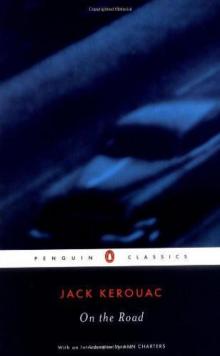 On the Road
On the Road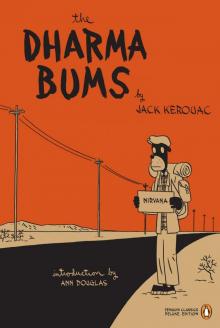 The Dharma Bums
The Dharma Bums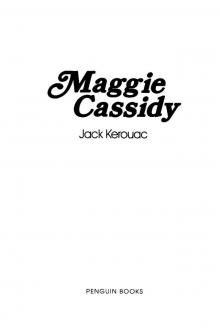 Maggie Cassidy
Maggie Cassidy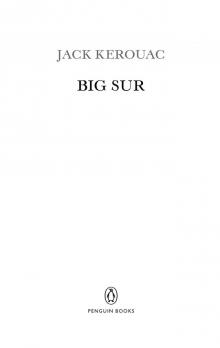 Big Sur
Big Sur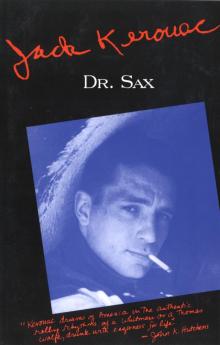 Dr. Sax
Dr. Sax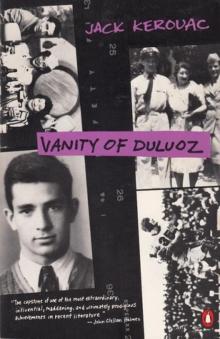 Vanity of Duluoz: An Adventurous Education, 1935-46
Vanity of Duluoz: An Adventurous Education, 1935-46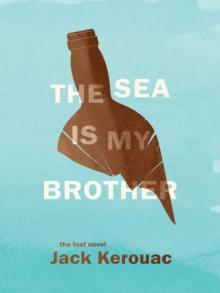 The Sea Is My Brother
The Sea Is My Brother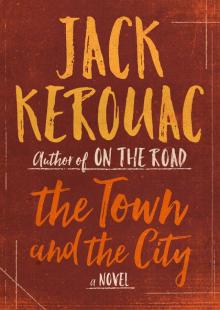 The Town and the City: A Novel
The Town and the City: A Novel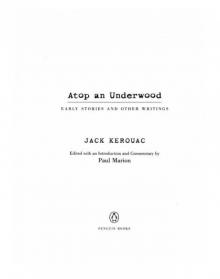 Atop an Underwood: Early Stories and Other Writings
Atop an Underwood: Early Stories and Other Writings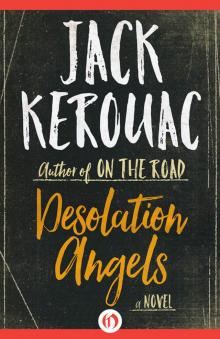 Desolation Angels: A Novel
Desolation Angels: A Novel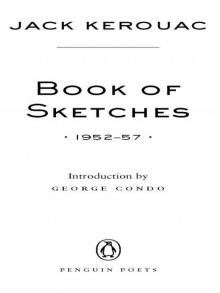 Book of Sketches
Book of Sketches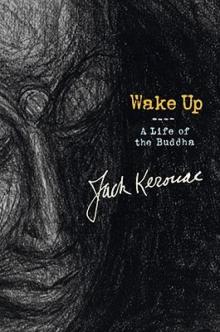 Wake Up: A Life of the Buddha
Wake Up: A Life of the Buddha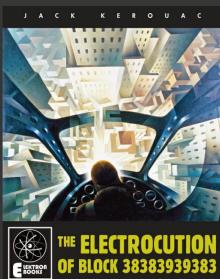 The Electrocution of Block 38383939383
The Electrocution of Block 38383939383 Haunted Life
Haunted Life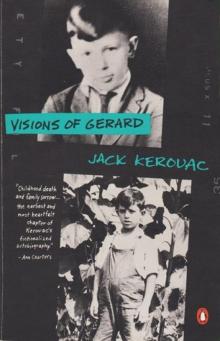 Visions of Gerard
Visions of Gerard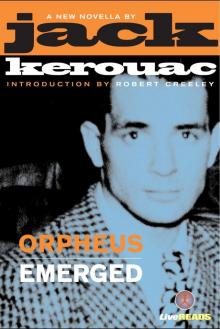 Orpheus Emerged
Orpheus Emerged Book of Blues
Book of Blues The Subterraneans
The Subterraneans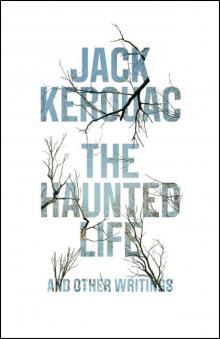 The Haunted Life
The Haunted Life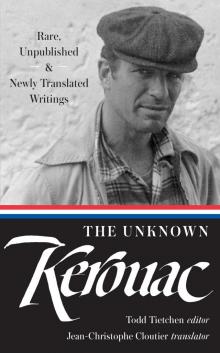 The Unknown Kerouac
The Unknown Kerouac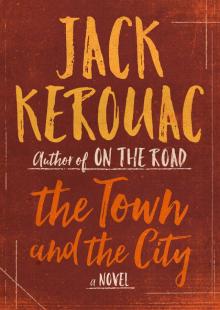 The Town and the City
The Town and the City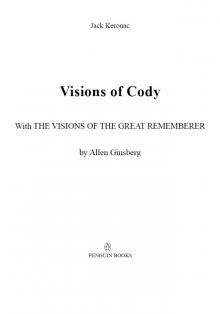 Visions of Cody
Visions of Cody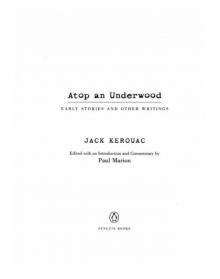 Atop an Underwood
Atop an Underwood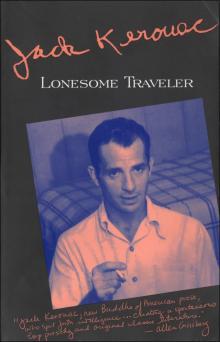 Lonesome Traveler
Lonesome Traveler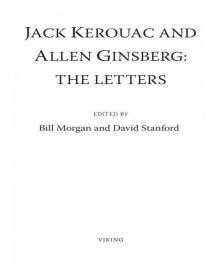 Jack Kerouac and Allen Ginsberg
Jack Kerouac and Allen Ginsberg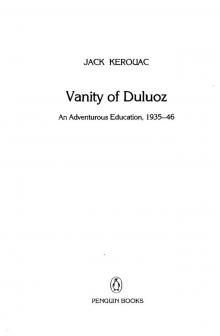 Vanity of Duluoz
Vanity of Duluoz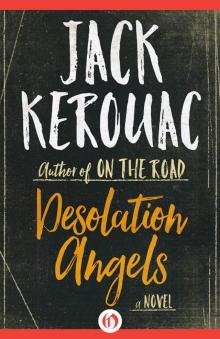 Desolation Angels
Desolation Angels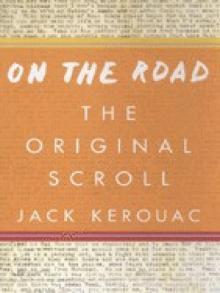 On the Road: The Original Scroll: (Penguin Classics Deluxe Edition)
On the Road: The Original Scroll: (Penguin Classics Deluxe Edition)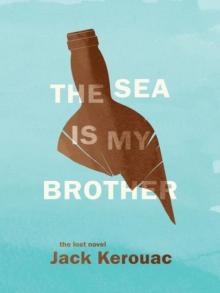 The Sea Is My Brother: The Lost Novel
The Sea Is My Brother: The Lost Novel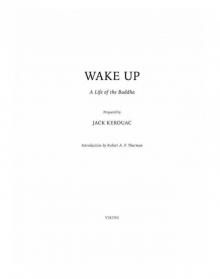 Wake Up
Wake Up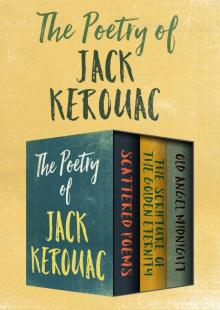 The Poetry of Jack Kerouac
The Poetry of Jack Kerouac Doctor Sax
Doctor Sax